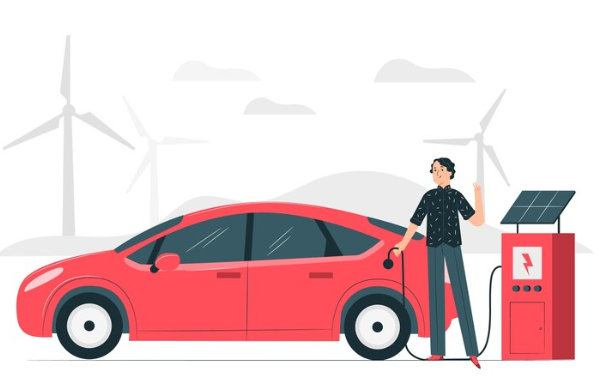The Rise of Electric Vehicles and the Demands for Charging Solutions

Key Takeaways:
- Understand the latest innovations in EV charging technology.
- Obtain an understanding of the trends that are molding the future of charging for electric vehicles.
- Explore the impact of these innovations on both urban and rural environments.
- Learn about the environmental and economic benefits of advanced EV charging solutions.
The Rise of Fast Charging Networks
In recent years, there has been a significant increase in the development of EV charging solutions. These networks are essential for speeding up charging times and improving the convenience of owning an electric vehicle. Fast charging stations, such as those being implemented in urban areas, allow EVs to recharge in a fraction of the time compared to traditional chargers. This change is pivotal as it alleviates the “range anxiety” many potential EV owners fear. The number of fast-charging installations in the U.S. surged by 30% last year, highlighting a growing infrastructure capable of supporting the increasing number of electric vehicles on the road. The widespread availability of fast chargers, often found at strategic locations such as highways and near businesses, plays a vital role in the daily adaptability of EVs.
Wireless Charging: Convenience at Your Fingertips
Wireless charging technology is another exciting innovation in the EV industry. This technology allows vehicles to charge without needing physical connectors, making the process smoother and more user-friendly. Imagine driving home and simply parking your car over a charging pad without plugging it in. This convenience can significantly improve the user’s experience. Moreover, advancements in wireless charging will make it feasible for public places like parking lots and streets to be equipped with this technology, encouraging more drivers to switch to electric vehicles. A recent article from Scientific American discusses the current state and future potential of wireless EV charging, emphasizing its role in simplifying the charging process. As this technology becomes more widespread, it could transform urban infrastructures, allowing integrated systems in malls, workplaces, and residential complexes.
Bidirectional Charging: More Than Just Charging
Bidirectional charging, or vehicle-to-grid (V2G) technology, allows EVs to draw and return power from the grid. This concept turns an EV into a vehicle and a mobile energy storage unit. Imagine a community where, during a power outage, EVs parked in garages can supply power back to homes and critical infrastructure. This technology can help balance the grid during peak times and provide backup power during outages. Additionally, by storing energy during off-peak hours and releasing it during peak hours, EV owners can earn money, further incentivizing the switch to electricity. V2G technology’s capacity to enhance energy utilization and decrease reliance on significant power plants results in a more robust and effective energy system. It also represents a shift towards more decentralized power systems, where individuals can contribute to and benefit from the broader energy network.
Standardization and Interoperability
As the number of EV charging stations increases, so does the need for standardized charging protocols. Currently, standardization can be a hurdle, with different EV models sometimes requiring different types of chargers. Interoperability between different charging networks ensures EV owners have a seamless experience, regardless of location or vehicle’s make. Efforts are underway globally to create universal standards for EV charging, making it easier for consumers to charge their vehicles anywhere. Initiatives like the Combined Charging System (CCS) are promising steps toward a standardized future, ensuring that a cohesive charging network supports the rapid growth in EV adoption. Standardization also fosters industry collaboration and innovation, encouraging the development of more advanced and user-friendly charging technologies.
Renewable Energy in EV Charging
Solar and wind power are increasingly important for electric vehicle charging systems. Solar charging stations are beneficial in remote areas with limited access to electricity infrastructure. It allows for greater flexibility and autonomy. Moreover, wind power can supplement solar energy to provide a consistent and reliable source of green electricity for EVs. This synergy between renewable energy and EVs is vital for creating a sustainable transportation ecosystem. Deploying renewable-powered chargers on a large scale will revolutionize how we think about energy consumption in transport, making every mile driven a step towards a greener planet.
Challenges and Opportunities in Rural Areas
While urban areas have seen rapid development in EV charging infrastructure, rural regions still face significant challenges. Limited access to charging stations can deter potential EV buyers in these areas. However, innovative solutions are being proposed to mitigate these issues. Portable chargers, for instance, can be lifesavers for rural EV owners, providing the necessary power when traditional charging stations are unavailable. Community charging hubs, where multiple vehicles can charge simultaneously, are also being established in some rural areas. These hubs encourage communal use and support. The goal is to make EV ownership feasible and convenient, regardless of location. Strategically placed fast chargers along rural highways and incorporating EV charging into existing convenience stops can transform the driving landscape, enabling EV travel across broader geographic spans without fear of running out of power.
Government Policies and Incentives
Governments worldwide recognize the importance of EV infrastructure and implement policies and incentives to accelerate adoption. Grants, tax breaks, and subsidies for installing EV chargers are some of the measures being taken to support this transition. In countries like Norway, for example, EV owners enjoy significant tax exemptions and access to dedicated parking spaces. These initiatives are crucial for achieving national and global sustainability goals and fostering an environment where electric vehicles can thrive. By encouraging more people to switch to EVs, governments are also working towards reducing greenhouse gas emissions and battling climate change. Policies such as zero-emission vehicle mandates and investment in green technologies are turning the wheels towards a more sustainable future, where electric vehicles play a pivotal role.
The Future Outlook for EV Charging Technology
As technology continues to evolve, the future of EV charging looks promising. Innovations such as ultra-fast chargers, enhanced energy storage solutions, and smart grid integration are set to revolutionize the EV industry. Ultra-fast chargers can significantly decrease charging times, making EVs even more convenient for daily use. Enhanced energy storage solutions can improve the efficiency of both EVs and the grid. Smart grid integration, on the other hand, allows for better electricity management, ensuring that energy is distributed where it’s needed most. By staying informed about these trends and innovations, consumers and businesses can better prepare for the electrification of transportation, making the transition to a greener future smoother for all. The continuous development in EV technology supports broader adoption and encourages a shift towards sustainable practices, ultimately contributing to a cleaner, healthier planet.





